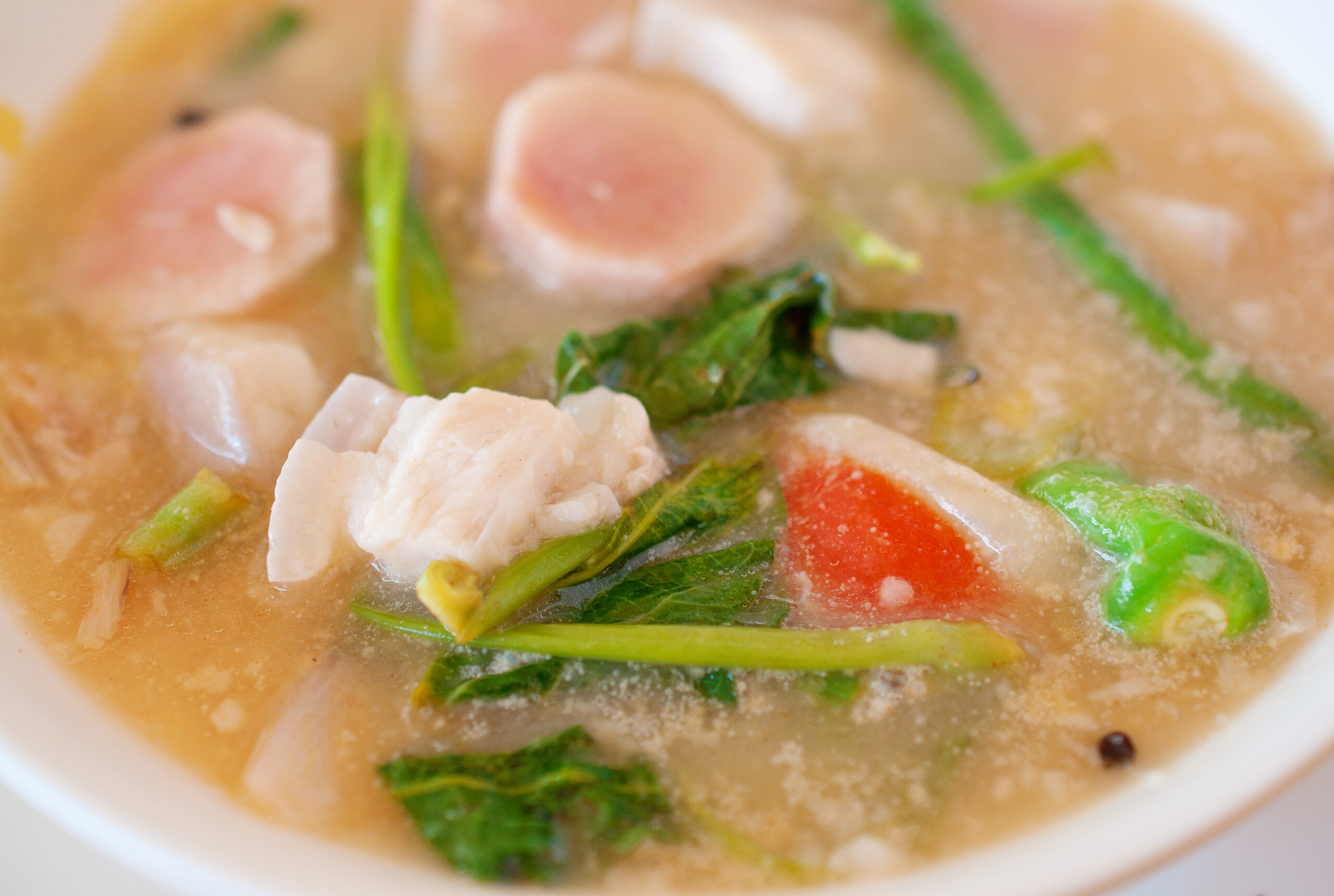Most Filipinos consider Adobo the national dish, and while it is unofficial in the eyes of the constitution, there have been attempts to legitimize it since 2014 under House Bill 3926.
Adobo has been around before the Spanish colonization, yet there are those who believe a different dish deserves the spotlight, fitting the rules of consideration as a national dish.
Enjoy the hot battle of the dishes that some Filipinos claim deserve to be named our national dishes.
1. Sinigang

A top competitor for the title, sinigang has become a staple dish in many Filipino homes because of its all-in-one pot delight.
Sour soup from the tamarind is mixed with your choice of protein and complete with vegetables of green, red, and white.
In 2021, it was hailed by TasteAtlas as the best vegetable soup in the world, impressing Filipinos and making some believe Sinigang truly deserves the National Dish Symbol.
2. Tinolang Manok

Some Filipinos are more fond of chicken and soup, thus nominating Tinolang Manok as a comfort food full of nutrients like Sinigang without the sour taste.
Its potential to be a national dish symbol also stems from the country’s national hero, Dr. Jose Rizal, who happens to consider Tinola his favorite food.
Rizal even mentioned Tinola in a scene of his novel ‘Noli Me Tangere’; this makes the dish also a worthy opponent of Adobo.
3. Sizzling Sisig

While soups are a good dish, some consider a different style of cooking for the National Dish; spicing up the competition would be the sizzling sisig.
Sisig is also a traditional food: chopped pork jowl, ears, and belly, then seasoned with some calamansi, onions, chili peppers, and, at times, mayonnaise. No wonder it has stolen the hearts of the people.
The food itself is simply a craving and soul food; it’s truly irresistible to say no to such crunch and spice and not become a national dish.
4. Kinilaw

Kinilaw is perhaps the rarest and only seafood competitor of Adobo, and much like it, the dish has been prepared since pre-colonial times.
The usual fish protein tanigue or mackerel, the acid from vinegar, and other citrus mixes such as calamansi cook the fish even without heat, an impressive cooking style from our ancestors.
Being nominated as a national dish for some serves as a reminder of how this smart technique paved the way for the country to enjoy the available herbs and spices used in other dishes.
While there is not much progress on the debate and the winner of the National Dish Symbol, one thing is for sure: Filipinos have the talent for home cooking.








